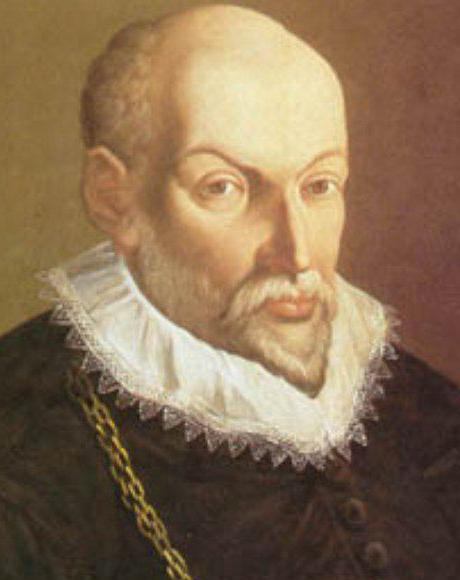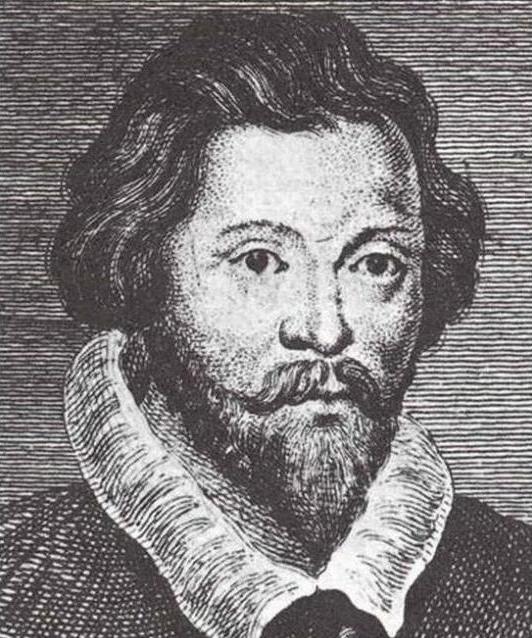The historian Jules Michelet in the XIX century was first used the concept of "Renaissance." The musicians and composers, which will be discussed in the article, belonged to the period that began in the XIV century, when the medieval dominance of the church was replaced by a secular culture with its interest in the human person.
Renaissance music
European countries at different times entered a new era. Earlier, the ideas of humanism arose in Italy, but the Dutch school dominated the musical culture, where for the first time special cathedrals (shelters) were created at the cathedrals, teaching future composers. The main genres of that time are presented in the table:
| Polyphonic song | Motet | Polyphonic Mass |
| Secular vocal genre, developing in two directions: close to the song (canzona, villanella, barcarole, frottola) and associated with traditional polyphony (madrigal) | Translated from French - “word”. Polyphonic vocal music, during which others with the same or different lyrics join one of the voices | Five-part polyphonic music for prayer texts |
The most famous Renaissance composers in the Netherlands are Guillaume Dufay, Jacob Obrecht, Josquin Depreux.
Great netherlands
Johannes Okegem was educated in the metric of Notre Dame (Antwerp), and in the 40s of the XV century he became a chorus chapel at the court of Duke Charles I (France). Subsequently, he headed the chapel of the royal court. Having lived to a very old age, he left a great legacy in all genres, having established himself as an outstanding polyphonist. Manuscripts of his 13 masses under the name Chigi codex, one of which is painted with 8 votes, have reached us. He used not only strangers, but also his own tunes.

Orlando Lasso was born on the territory of modern Belgium (the city of Mons) in 1532. His musical abilities appeared in early childhood. The boy was kidnapped three times from home to make him a great musician. He spent his entire adult life in Bavaria, where at the court of Duke Albrecht V he acted as a tenor, and then headed the chapel. His highly professional team contributed to the transformation of Munich into the musical center of Europe, where many famous Renaissance composers visited.
Talents such as Johann Eckard, Leonard Lechner, Italian D. Gabrieli came to study with him . He found his last refuge in 1594 on the territory of the Munich Church, leaving a grandiose legacy: more than 750 motets, 60 masses and hundreds of songs, among which the most popular was Susanne un jour. His motets (“Prophecies of the Sibyls”) were distinguished by innovation, but he is also known for secular music, in which there was a lot of humor (Vilanella O bella fusa).
Italian school
Prominent Renaissance composers from Italy, in addition to traditional trends, actively developed instrumental music (organ, stringed bowed instruments, clavier). The lute became the most common instrument, and at the end of the 15th century a harpsichord appeared - the predecessor of the piano. Based on the elements of folk music, two influential composer schools developed: the Roman (Giovanni Palestrina) and the Venetian (Andrea Gabrieli).
Giovanni Pierluigi took the name Palestrina by the name of a town near Rome, where he was born and served in the main church as choirmaster and organist. His date of birth is very approximate, but he died in 1594. For a long life he wrote about 100 masses and 200 motets. His "Mass of Pope Marcellus" aroused admiration of Pope Pius IV and became a model of Catholic sacred music. Giovanni is the most vivid representative of vocal singing without musical accompaniment.
Andrea Gabrieli, along with his pupil and nephew Giovanni, worked in the chapel of St. Mark (XVI century), "coloring" the singing of the choir with the sound of an organ and other instruments. The Venetian school gravitated more to secular music, and when staging Oedipus Sophocles, the music of the choirs, an example of choral polyphony and a harbinger of future opera art were written on the theater stage by Andrea Gabrieli.
Features of the German school
German land nominated Ludwig Senfle , the best polyphonist of the 16th century, who, however, did not reach the level of Dutch masters. Songs of poets-singers from among artisans (mastersingers) are also special music of the Renaissance. The composers of Germany represented singing corporations: tinsmiths, shoemakers, and weavers. They united on the territory. An outstanding representative of the Nuremberg school of singing became Hans Sachs (years of life: 1494-1576).
Born into a tailor's family, he worked all his life as a shoemaker, striking with his well-read and musical-literary interests. He read the Bible in the interpretation of the great reformer Luther, knew ancient poets and appreciated Boccaccio. As a folk musician, Sax did not possess the forms of polyphony, but created melodies of the song depot. They were close to the dance, easy to remember and had a certain rhythm. The most famous piece was The Silver Chant.
Renaissance: musicians and composers of France
The musical culture of France really felt a renaissance only in the 16th century, when social soil was prepared in the country.
One of the best representatives is Clement Zhaneken . It is known that he was born in Chatellerault (end of the 15th century) and went from a boy-singer to a personal composer of the king. Only secular songs published by Attenian have survived from his creative heritage. There are 260 of them, but those who have passed the test of time have gained real fame: “Bird Singing”, “Hunting”, “Lark”, “War”, “Cries of Paris”. They were constantly reprinted and used by other authors for processing.
His songs were polyphonic and resembled choral scenes, where, in addition to onomatopoeia and cantilevered voice, there were exclamations responsible for the dynamics of the work. This was a bold attempt to find new methods of imagery.
Among the famous composers of France - Guillaume Cotlet, Jacques Modouy, Jean Baif, Claude Lejeune, Claude Gudimel , gave the music a harmonious repository, which contributed to the assimilation of music by the general public.
Renaissance Composers: England
The 15th century in England was influenced by the works of John Dubstyle , and the 16th century by William Bird . Both masters gravitated to sacred music. Bird began as the organist of the cathedral in Lincoln, and ended his career at the Royal Chapel of London. For the first time he managed to connect music and entrepreneurship. In 1575, in collaboration with Tallis, the composer became a monopolist in the publication of musical works, which did not bring him profit. But it took a lot of time to assert in the courts of their right to property. After his death (1623) in official documents of the chapel he was called the "pioneer of music."

What did the great Renaissance composers leave behind? In addition to the published collections (Cantiones Sacrae, Gradualia), Byrd has preserved many manuscripts, considering them suitable only for home worship. Later published madrigals (Musica Transalpina) showed great influence by Italian authors, but several masses and motets were included in the golden fund of sacred music.
Spain: Cristobal de Morales
The best representatives of the Spanish school of music passed through the Vatican, speaking in a papal chapel. They felt the influence of Dutch and Italian authors, so only a few managed to become famous outside their own country. Renaissance composers from Spain were polyphonists creating choral works. The most striking representative is Cristobal de Morales (XVI century), who headed the metriz in Toledo and trained more than one student. A follower of Josquin Depres, Cristobal brought a special technique to a series of compositions called homophonic.
Two requiems of the author (the last - by five votes), as well as the Mass "Armed Man" became most famous. He also wrote secular works (cantata in honor of the conclusion of a peace treaty in 1538), but this refers to his earlier works. Leading the chapel in Malaga at the end of his life, he remained the author of sacred music.
Instead of a conclusion
Renaissance composers and their works prepared the heyday of instrumental music of the 17th century and the emergence of a new genre - the opera, where the intricacies of many voices are replaced by the primacy of one leading the main melody. They made a real breakthrough in the development of musical culture and laid the foundation for modern art.